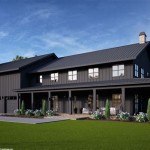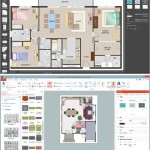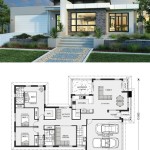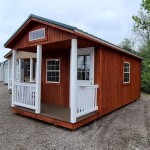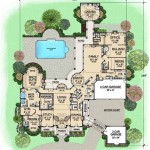Single Story Narrow House Plans: Optimizing Space and Style
Single story narrow house plans represent a practical and often aesthetically pleasing solution for homeowners facing limited lot sizes or specific design preferences. Characterized by their elongated footprint and single-level construction, these designs prioritize efficient space utilization and accessibility. Understanding the principles behind their design and considering the available options is crucial for anyone interested in building a comfortable and functional home on a narrow plot.
The appeal of single story narrow house plans extends beyond mere practicality. They offer inherent advantages in terms of construction costs, maintenance, and accessibility for individuals with mobility challenges. Furthermore, modern architectural styles and innovative design techniques have transformed these once-considered restrictive blueprints into opportunities for creating unique and stylish living spaces.
This article delves into the key considerations for single story narrow house plans, exploring design principles, functional elements, and aesthetic considerations. It will examine various architectural styles and provide insight into maximizing space and light within the constraints of a narrow footprint.
Understanding the Challenges and Opportunities
Narrow lots present unique design challenges. The restricted width limits the placement and size of rooms, requiring careful planning to ensure adequate natural light and comfortable circulation. Traditional layouts may need to be adapted or reimagined to fit the elongated shape effectively. However, these challenges also provide opportunities for creative solutions. The linear form lends itself well to open-plan designs, providing a sense of spaciousness and connectivity.
One of the primary challenges is maximizing natural light penetration. With limited width, the central areas of the house can easily become dark and feel claustrophobic. Strategic placement of windows, skylights, and light wells becomes paramount. High ceilings can also contribute to a more open and airy feel, diffusing light more effectively throughout the space.
Another key consideration is efficient circulation. A long, narrow floor plan can lead to a feeling of being trapped or isolated. A well-designed layout will prioritize clear pathways and minimize dead-end hallways. Open-plan living areas can help to create a sense of flow and connectivity, making the space feel more integrated and inviting.
Furthermore, the exterior design must complement the surrounding environment while also maximizing the usable space within the narrow footprint. Careful consideration of setbacks and building codes is essential to ensure compliance and avoid potential conflicts with neighbors. Integrating outdoor living spaces, such as patios or decks, can extend the living area and create a seamless transition between indoors and out.
Key Design Principles for Single Story Narrow Houses
Several design principles are crucial for the successful execution of single story narrow house plans. These principles guide the layout, structural considerations, and aesthetic choices, ensuring a functional and visually appealing result.
Open-Plan Living:
Embracing an open-plan layout is often the most effective way to maximize space and create a sense of flow in a narrow house. Combining the living room, dining area, and kitchen into one large, multi-functional space eliminates the need for dividing walls, allowing light to penetrate deeper into the house and creating a more social and connected living environment.Zoning:
While open-plan living is beneficial, it's important to define distinct zones within the space. This can be achieved through subtle changes in flooring, the strategic placement of furniture, or the use of area rugs. These visual cues help to delineate different functions and create a sense of order within the open space.Vertical Space:
Maximizing vertical space is another key strategy for narrow house design. High ceilings, strategically placed shelving, and lofted areas can create a sense of spaciousness and provide additional storage. Utilizing the vertical dimension draws the eye upward, making the space feel less confined.Natural Light:
Maximizing natural light is critical to combating the potential for darkness in a narrow house. Large windows, skylights, and light wells should be strategically placed to capture as much sunlight as possible. Consider the orientation of the house and the position of the sun throughout the day to optimize light penetration. Translucent materials, such as glass blocks or frosted glass, can also be used to diffuse light while maintaining privacy.Minimalism:
Embracing a minimalist aesthetic can help to create a sense of calm and order in a narrow space. Reducing clutter and choosing simple, streamlined furniture pieces can prevent the space from feeling overwhelmed. A neutral color palette can further enhance the feeling of spaciousness.Storage Solutions:
Clever storage solutions are essential for maximizing space in a narrow house. Built-in shelving, hidden compartments, and multi-functional furniture can help to keep clutter at bay and create a more organized living environment. Consider utilizing the space under stairs or in awkward corners for storage.Outdoor Integration:
Connecting the interior living spaces with the outdoors can create a sense of spaciousness and extend the living area. Patios, decks, and courtyards can provide additional living space and create a seamless transition between indoors and out. Large sliding doors or French doors can further enhance this connection.Exploring Different Architectural Styles
Single story narrow house plans can be adapted to a variety of architectural styles, allowing homeowners to express their personal preferences and create a home that reflects their unique taste. Some popular styles include:
Modern:
Modern narrow house plans often feature clean lines, large windows, and minimalist detailing. They typically emphasize functionality and efficiency, with open-plan layouts and a focus on natural light. Materials such as concrete, steel, and glass are commonly used.Contemporary:
Contemporary designs are similar to modern styles but tend to be more flexible and incorporate a wider range of materials and design elements. They often feature asymmetrical shapes, bold colors, and innovative technologies. Contemporary narrow houses may incorporate sustainable design features such as solar panels or rainwater harvesting systems.Scandinavian:
Scandinavian-inspired narrow houses are characterized by their simplicity, functionality, and use of natural materials. Light wood finishes, neutral colors, and cozy textiles are common elements. The emphasis is on creating a warm and inviting atmosphere.Farmhouse:
Farmhouse-style narrow houses evoke a sense of nostalgia and rustic charm. They often feature exposed beams, wide plank flooring, and traditional details such as porches and gabled roofs. Natural materials such as wood and stone are commonly used.Craftsman:
Craftsman-style narrow houses are known for their attention to detail and handcrafted elements. They typically feature low-pitched roofs, wide eaves, and exposed rafters. Natural materials such as wood, stone, and brick are commonly used. Craftsman houses often incorporate built-in cabinetry and other custom features.The choice of architectural style will ultimately depend on the homeowner's personal preferences and the surrounding environment. However, it's important to consider how the style will impact the overall functionality and aesthetics of the narrow house. A well-chosen style can enhance the sense of spaciousness, maximize natural light, and create a comfortable and inviting living environment.
Ultimately, single story narrow house plans offer a viable and often desirable solution for homeowners seeking efficient and stylish living spaces on constrained lots. By carefully considering the challenges and opportunities presented by the narrow footprint, and by embracing key design principles, it is possible to create a home that is both functional and aesthetically appealing. The selection of an appropriate architectural style further enhances the personalized character of the dwelling.

Calypso Premium Narrow Lot Home Plan Single Y Design House Plans

Single Story 3 Bedroom Modern Home For A Narrow Lot With Double Garage Floor Plan Bungalow Plans House
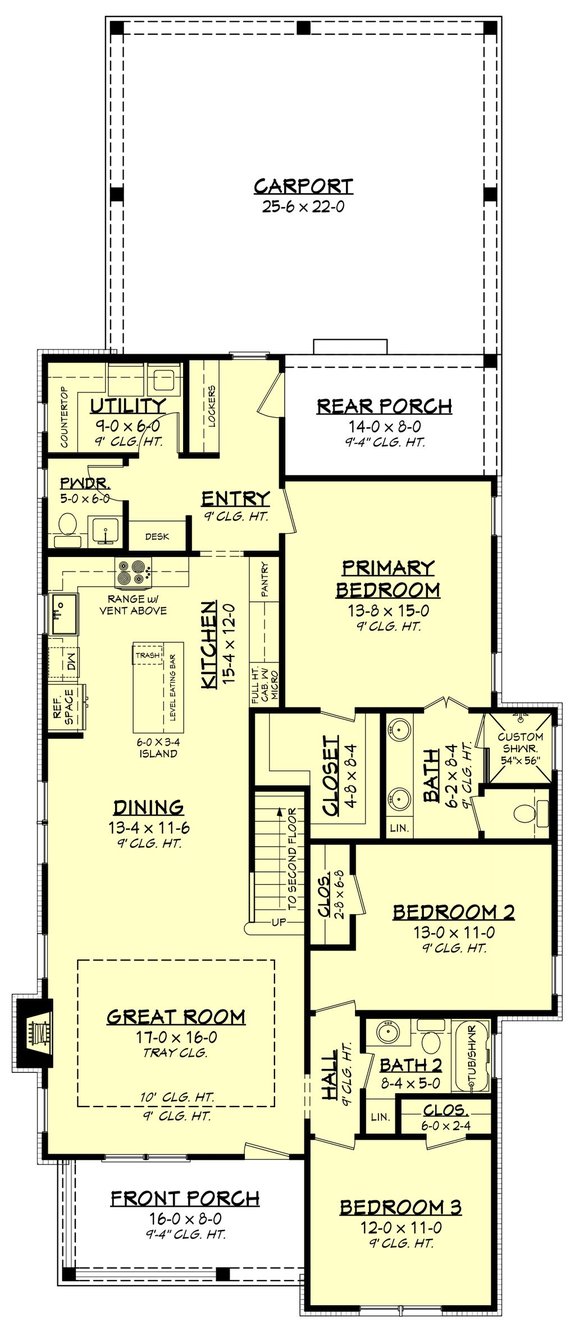
Simple Narrow Lot House Plans Houseplans Blog Com

Narrow Lot Home Designs Hallmark Homes

Narrow Lot House Plans One Story

One Story House Plan For The Narrow Lot 42593db Architectural Designs Plans

1 Story Narrow Modern Farmhouse Plan Buckhead Ridge

Simple Narrow Lot House Plans Houseplans Blog Com

Narrow Lot Home Designs Hallmark Homes
Narrow Block Plans


